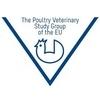Check out what is new in Poultry Industry
Find the best technical articles, forums, and videos on Poultry Industry at Engormix. Enter now and interact with the world's largest agricultural social network.
Sickness behavior is an animal’s adaptive response to disease which aids in their recovery. When an animal is infected by a pathogen, an immune response involving immune cell and immune molecule activity is stimulated and sickness behavior results. Sick chickens are difficult to identify because they rarely show signs of illness before it...
Comments : 0
Recommendations: 1
I. EPIDEMIOLOGY OF SALMONELLA INFECTIONS Most Salmonella strains belong to non-host specific or broad-host range serotypes, and thus can colonize the gut of many animal species, including humans. In contrast to host-specific serotypes that cause septicemia and severe disease (typhoidal serotypes), the broad-host range serotypes are asymptomatically colonising the host in most cases, but can cause diarrhoea when high numbers of bacteria are orally take up at once, as is...
Comments : 0
Recommendations: 0
I. INTRODUCTION Heat stress is considered one of the important factors affecting the profitability of the poultry industry in hot climates. Significant economic losses occur due to high mortality, impaired feed efficiency and poorer growth rates (Lara and Rostagno, 2013). Periods of high temperature prior to transport and processing can further compound these adverse effects. One of the physiological consequences of heat stress in broilers is disruption of acid base...
Comments : 0
Recommendations: 0
Zinc (Zn), as an essential trace element, is a common feed additive for food producing animals. Zn is supplemented in either an inorganic or organic form. Literature suggests inconsistency among both sources regarding trace mineral availability and influence on animal performance, but organic trace minerals are considered to be advantageous (Schlegel et al., 2013). Between organic trace minerals, the chemical bond is the main difference. While mono-glycinates are complexes with one amino...
Comments : 0
Recommendations: 0
Field pea ( Pisum sativum ) is a good source of protein but can also provide energy due to high starch content (Petterson et al., 1997). The slowly digestible starch in pea may improve energy utilization in broilers because of the prolonged elevated plasma glucose levels (Enting et al., 2005). Thus, partial replacement of soybean meal and wheat with pea may affect the net energy value of the diet. This experiment was performed to investigate the effect of pea in diet formulation on...
Comments : 0
Recommendations: 1
Phytase supplementation of broiler diets can improve energy, amino acid, calcium (Ca) and phosphorus (P) utilization. Both fungal- and bacterial-derived phytases are commonly added to broiler diets. Phytases from different sources and even from the same source can have different pH optima, heat stability, and catalytic properties (Dersjant-Li et al, 2015). Furthermore, when different microbial phytases are included in diets, their efficacy in vivo can vary in comparison to their assayed...
Comments : 0
Recommendations: 2
.jpg&w=3840&q=75)

40 Years of Success in China with Hy-Line (Mandarin-language video)
Suggested link
Understanding the dynamics of calcium (Ca) and phosphorus (P) metabolism is an important consideration when evaluating the requirements for both nutrients. Much more is known about the control of Ca than P metabolism (Li et al., 2017). Calcium elimination from the body is primarily through faeces, both unabsorbed dietary Ca and endogenous Ca. Kidney Ca elimination is controlled by endocrine factors and to a lesser extent by dietary Ca. In practical terms, dietary Ca may be available but not...
Comments : 0
Recommendations: 0
1. Introduction The poultry industry has undergone many changes in recent years in response to increasing demand for both meat and eggs [1]. As a result, nutritionists and geneticists have performed extensive work to improve bird weight, maturity time, growth rate, feed efficiency, and size of breast meat [1]. These changes have affected muscle formation and the chemistry of the modern broiler meat and consequently meat quality traits. Consumers demand high-quality meat, which...
Comments : 0
Recommendations: 0
INTRODUCTION There has been a substantial global expansion in egg production by the layer industry as the volume of egg production has increased by 119% (35.5 vs. 76.8 million tonnes) from 1990 to 2018 (http://www.fao.org) (Food and Agricultural Organization of the United Nations, 2018). This growth represents an average annual increase of 2.84%. China produced 458 billion eggs in 2018, and the USA produced 109 billion eggs in 2018 (https://www.statista.com). China had the...
Comments : 0
Recommendations: 1
...
Comments : 3
Recommendations: 0
INTRODUCTION Medicinal plants are reservoirs of bioactive compounds used by humans since early ages in traditional medicine for the treatment and prevention of diseases due to their therapeutic potential (Arun and Varsha, 2014; Dilfuza et al ., 2015). According to Oluwafemi et al . (2020); Adewale et al . (2020), there are over 500,000 species of medicinal plants identified globally which has led to the discovery of novel drugs or new pharmaceuticals used...
Comments : 0
Recommendations: 2
...
Comments : 0
Recommendations: 0
.mp4&w=3840&q=75)
PRO-MaXYL™ is a high-performance and refined enzyme combination to improve the performance of modern poultry diets. PRO-MaXYL is the comprehensive solution for flexible poultry diet formulation
...
Comments : 4
Recommendations: 4
.mp4&w=3840&q=75)
Mr. O.P. Singh - Managing Director of ABTL Enzymes, points out how to deal with the ongoing crisis of feed raw material and the commitment of ABTL as an important player in feed enzymes and the animal nutrition industry in SE ASIA
...
Comments : 1
Recommendations: 2
.mp4&w=3840&q=75)
Let’s talk about Guanidinoacetic acid (GAA).Lukas Bauer, Manager Technical Consultancy for GuanAMINO® at Evonik Animal Nutrition, describes the Evonik’s customer experience using GuanAMINO® focusing on profitability and return on investment
...
Comments : 0
Recommendations: 4
In 2021 mycotoxins annual survey, Life Rainbow Biotech randomly collected 393 feed samples of raw materials and feed mills in farms and analyzed. The samples were tested for aflatoxins (B1, B2, G1, and G2), zearalenone, fumonisins (B1, B2, and B3) and deoxynivalenol (DON) by the ELISA Mycotoxin analysis kit. Results: From January to December 2021, the import volume of feed corn was 4,128 thousand tons, and the United States is 35.26%, followed by Brazil and Argentina for...
Comments : 0
Recommendations: 2
Introduction Recommendations for lighting programs during the rearing period for broilers generally include a dark period. In Canada, the Codes of Practice for Chickens, Turkeys and Breeders (https://www.nfacc.ca/pdfs/codes/poultry_code_EN.pdf) require that a minimum of 4 hours of continuous dark is included in a photoperiod program from day 5 of placement to no sooner than 7 days prior to catching. However, this remains a controversial subject, and the inclusion of darkness is...
Comments : 0
Recommendations: 0
Introduction Controlling production costs and animal welfare are important factors for breeders. Feed accounts for 50 to 70% of the production cost in poultry production (van Horne, 2018). The feed conversion ratio (FCR), which is the ratio of feed consumption to meat or egg production, is an important criterion for the profitability of these farms. It is also an indicator of the environmental impact of production. For example, the reduction of 10% in FCR results in a reduction...
Comments : 5
Recommendations: 2
INTRODUCTION Virginiamycin (Vm) is a cyclic polypeptide antibiotic complex from Streptomyces virginiae of the streptogramin class of antibiotics. It is commonly used to treat infections from gram-positive organisms or as a growth promotant in cattle, swine, and poultry diets. The Vm complex consists of 2 major components, Vm factor m1 and s1, which act synergistically to prevent protein synthesis within bacteria (Cocito, 1979). It also has been suggested that antibacterial...
Comments : 0
Recommendations: 0
1. Introduction Among viral diseases affecting poultry production Newcastle disease (ND) is one of the most common and serious one [1]. It is caused by viruses of genus Orthoavulavirus, Avian orthoavulavirus 1 species [2] formerly designated as Avian avulavirus 1, that are commonly known as Avian paramyxovirus 1 (APMV 1) or Newcastle disease viruses (NDV). The virulent forms of NDV cause a devastating disease of poultry throughout Asia, Africa, the Middle East, and Central and...
Comments : 0
Recommendations: 0












.jpg&w=3840&q=75)






.jpg&w=3840&q=75)




.jpg&w=3840&q=75)












